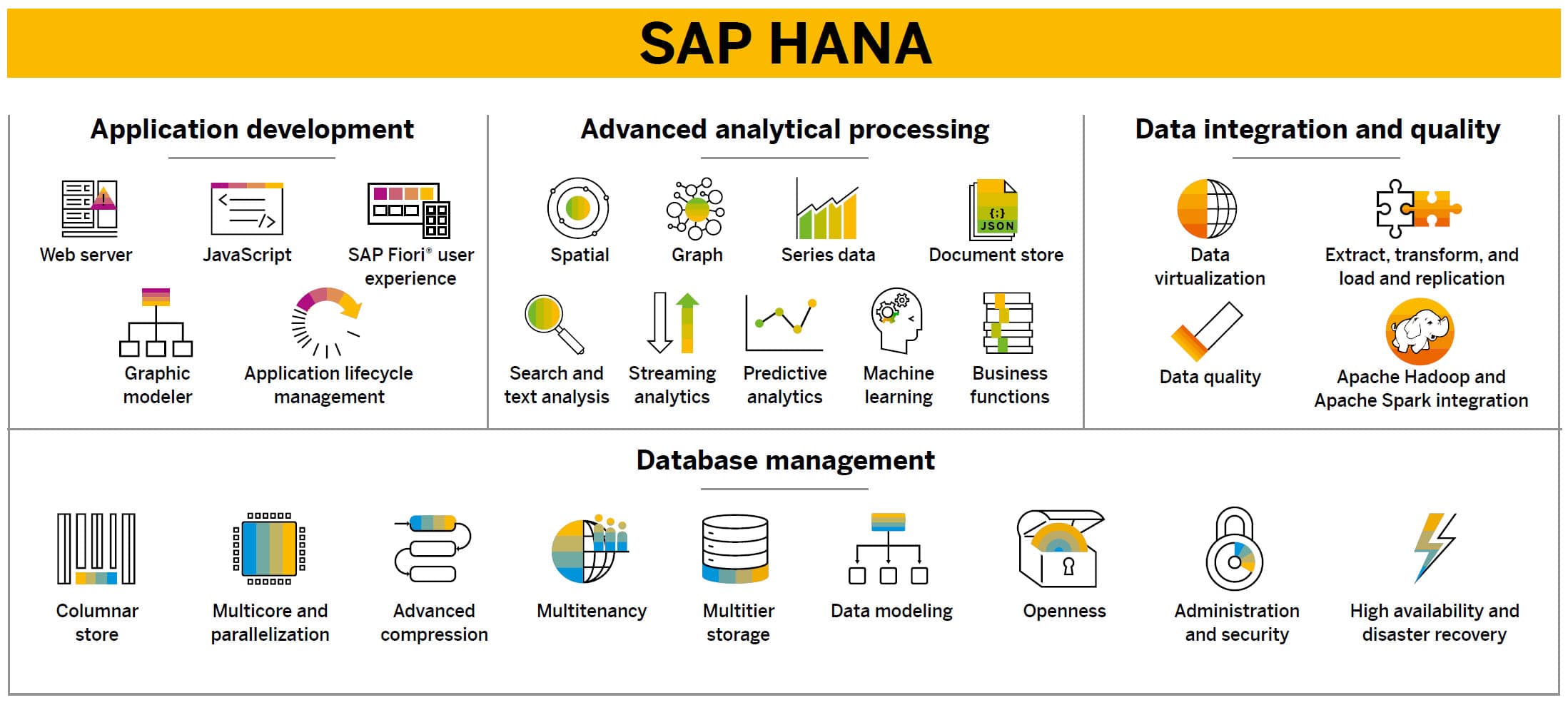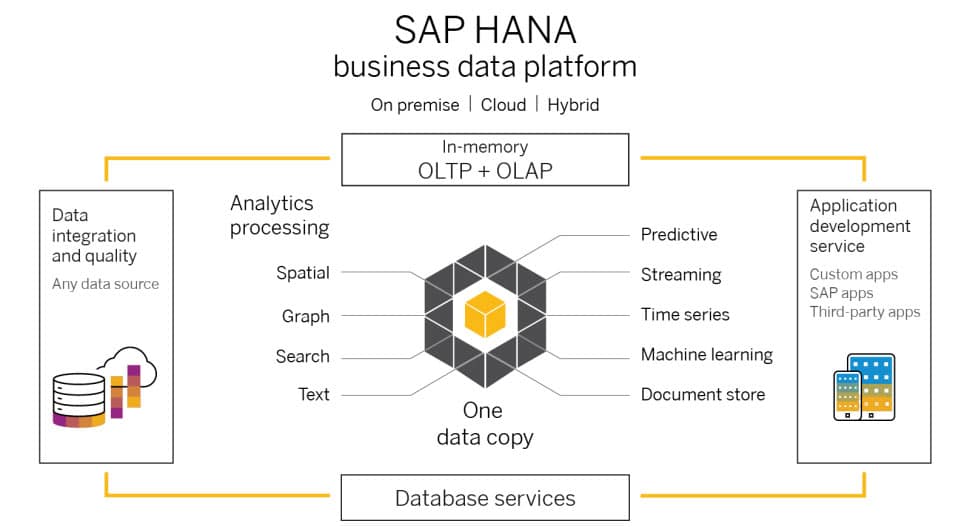When SAP first introduced the idea of the in-memory database SAP HANA in 2010, skeptics dismissed the idea as a “complete fantasy.”
Relational databases on premise had been the backbone of enterprise systems, and some questioned whether the in-memory approach could really work when applied enterprise-wide to a company’s data assets. At that time, relational data lakes and the cloud were mostly a dream of the future.
I was very fortunate to gather customer feedback on SAP HANA early on. While I was working on my PhD on new applications optimized for in-memory databases at the Hasso Plattner Institute (HPI), I had the opportunity to present one of the first SAP HANA demos, a dunning app, developed at the HPI for SAPPHIRE in 2010. Just as it continues to be today, customer feedback was invaluable and helped us a lot in those early days.
Fast forward 10 years, and more than 32,000 customers are now benefiting from what has become the engine of the Intelligent Enterprise. Analysts have also consistently confirmed SAP’s database strategy: In 2019 SAP was positioned as a leader for the seventh consecutive year in the Gartner Magic Quadrant for Data Management Solutions for Analytics, and most recently was rated as a leader in the Forrester Wave for Data Management for Analytics.
The “complete fantasy” of SAP HANA turned out to be a reality that severely disrupted the database market. And with its latest innovation — SAP HANA Cloud — SAP HANA has become a fully fledged cloud solution that offers all the innovative capabilities that are unique to SAP HANA, as a cloud service.

As SAP Supervisory Board Chairman and SAP Co-Founder Hasso Plattner explained back in 2010, an in-memory database paved the way to do things that had previously been considered impossible.
The core features of SAP HANA — its ability to process both analytical and transactional workloads, remove aggregates and secondary data structures, and harness the performance of in-memory computing — led Hasso to predict not just a revolution in the database market, but in applications too.
The architecture of SAP HANA paved the way for an entirely new approach to building solutions.
Lasting Impact
In 2012, SAP Business Warehouse was the first SAP product to benefit from the in-memory performance, soon followed by an SAP HANA-optimized SAP Business Suite at the beginning of 2013. In 2015, SAP launched the next-generation enterprise resource planning (ERP) system SAP S/4HANA. Specifically designed to take full advantage of the benefits offered by SAP HANA, SAP S/4HANA enables much faster business processes, simplified data models, and the ability to analyze transactional data in real time.
The following year, SAP BW/4HANA was launched and since then the number of products powered by SAP HANA has continued to grow. The database now underpins many products and solutions across the SAP portfolio, including SAP SuccessFactors, SAP Customer Experience, and SAP Ariba solutions.
Since it completed the migration to SAP HANA, SAP SuccessFactors solutions have been able to hit a peak of 1 billion cloud transactions per day. SAP Customer Experience solutions can import data 65-times faster than legacy databases. SAP HANA, with its column orientation, allows for higher data compression ratios and helps to minimize data footprints. For example, the SAP Customer Experience team achieved compression rates of up to 10-times with SAP Sales Cloud. By moving to SAP HANA, the SAP Ariba team has been able to increase its key measure of overall cloud health number by 18 points (on a 100-point absolute scale) across the board.

SAP HANA also provides a development framework to build custom data-driven applications that use, for example, predictive analytics, data anonymization, and spatial services in real time, in the cloud, and on premise. The many SAP Innovation Award entries submitted every year by our customers and partners offer some great examples.
For instance, this year’s winner in the Technology Disruptor category: Independent Big Data consultancy and SAP partner Clariba created an app called “act·in | football.” This mobile-enabled sports performance repository and application uses in-memory SAP HANA technology in the cloud — SAP Cloud Platform, SAP HANA service. The app brings together a variety of structured and unstructured data from numerous sources, including game-day statistics, sensors, medical history records, scouting reports, and on-pitch cameras. The result is a solution that gives players, coaches, and managers real-time performance feedback that enables them to take action, maximize impact, and win on the field.
Another customer that has benefited is Charité, one of Europe’s largest university hospitals, renowned for its leadership in healthcare and research. When the hospital decided to expand the scope of its TBase database for digital patient records to other departments, it needed a robust solution to bring together disparate databases and meet the needs of the different specialist areas, while still guaranteeing the highest standards in patient data security.
Thanks to SAP HANA, clinicians and researchers at Charité now work on a single shared, integrated, and much faster platform. According to Charité CIO Martin Peuker, “Our data must be easy to capture, secure, and accessible for doctors, nurses, and patients. For the first time, this is now possible on our SAP HANA platform with our developed solution, TBase@Charité.”
Dawn of a New SAP HANA Era in the Cloud
In the decade since SAP HANA was first introduced, we have seen an explosion in the amount of data produced, the impact of digitalization, and the growth of cloud computing. Research firm IDC predicts that global datasphere will increase from 33 zettabytes in 2018 to 175 zettabytes by 2025.
For the vast majority of our customers, the data they need to access to understand their business is no longer contained within the four walls of the enterprise. It is generated by everything from smart devices to social media. And while companies are really excited about the possibilities of digitalization and all this data, they are also struggling to exploit its full potential. Even though many organizations have access to petabytes of data, the majority can only use terabytes’ worth of information at most. They experience what we call a “data swamp.”
Companies are struggling to manage their data value chain and to extract value from it. This includes the access to the data, the storage of data, its quality and consistency, as well as how it is used and consumed. In response, we have made it our mission to establish a new approach to database and data management. Our goal is to enable our customers to get the maximum value out of the data available to them. To do that, we’re taking the brilliance of SAP HANA — the same speed, the same simplicity, and the same convenience — and transitioning it into this new context.
Last year, we announced the Business Technology Platform. It is not a new product, but a set of integrated solutions that accelerate the transformation of data into business value. It includes SAP HANA and the most recent milestone in the evolution of SAP’s proud database history: SAP HANA Cloud. The Business Technology Platform also encompasses SAP Cloud Platform, SAP Analytics Cloud, SAP Data Warehouse Cloud, and the SAP portfolio of intelligent technologies.
SAP HANA Cloud deals with any type of data, regardless of whether it is big or small, structured or unstructured. It provides one technology to store and process data at scale. Working with any data means going beyond main memory, so with SAP HANA Cloud, we have a disk option, a data lake option, and it integrates directly with remote object stores — for example, from cloud infrastructure providers.
While the advantages of cloud computing are indisputable, we also recognize that our customers are at different stages of their digital transformation journeys. That’s why we have designed SAP HANA Cloud to extend on-premise landscapes to the cloud while enabling our customers to continue to benefit from their existing investments and transition at their own pace. SAP Data Warehouse Cloud is, for example, already running on SAP HANA Cloud.
Ultimately, the combination of advanced virtualization capabilities and flexible data storage and process options provides companies with a single gateway to all their data. Once again, SAP HANA is set to revolutionize the way organizations work by helping them understand their business better than ever before. Looking back on what has already been achieved in its first decade, we’re very excited to see the innovation that this next step in the SAP HANA journey will fuel.
Juergen Mueller is chief technology officer and a member of the Executive Board of SAP SE.



